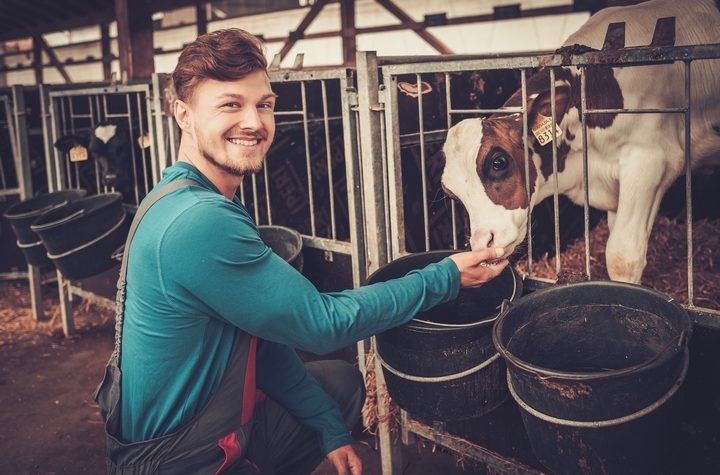Raising cattle, like any other business, requires dedication, knowledge, time, and funds. To successfully start a new farm, you need a business plan, a piece of land, and some startup funds. You will also need to have the relevant paperwork in place to comply with the requirements of the local administration.
Below is a 7-step process for how to raise cattle:
1. Start with a Small Herd of Cattle

If you want to raise cattle, it’s advisable to start with 2 to 5 healthy cows. This will allow you to focus on maximizing their produce and value. Having a small herd means they don’t overwhelm you or eat your pastures to ruin.
Nonetheless, if you have the experience, funds, a barn and enough pasture, you can start with a large herd. The size of your herd should, however, depend on the available market for your products.
2. Go with Beef Farming

The flexibility of a beef farm outweighs that of a dairy farm. This is because ranchers sell cattle once or twice a year during the fall. This allows them to spend the rest of the time tending the cattle to ensure they grow big and strong. Beef ranching is land intensive.
The cows forage and roam a lot; hence, they require plenty of land space. Luckily, the availability of public land or good pasture keeps the overhead startup costs relatively low.
3. Go with Dairy Farming for Constant Produce

Dairy farming will give you constant produce. It is, however, more labour and cost intensive and requires diligence to ensure the cattle produce enough milk per day. Dairy cows have to be fed and milked at a specific time every day. Their diet, such as quality hay, should be nutrient-specific, and hence more costly. Besides, dairy farms require extra equipment such as milking machines and stanchions.
The good news is that a good cow produces milk throughout the year, ensuring a constant flow of income. To maintain adequate milk production, you may need to keep a bull around or use artificial insemination.
4. Consider Calf Farming

A calving farm has many similarities with a dairy farm but without the milking equipment. Here, calves are raised for sale to show clubs such as 4-H, to other farmers, or raised for veal production. This kind of farming requires a separate calving bard.
Alternatively, you can keep a bull or go for artificial insemination. If you are looking for a quick profit, calves give you the luxury of selling them whenever you want without having to wait for them to mature. It is, however, prudent to keep a few calves for your farm instead of selling all of them.
5. Make sure you have Ample Pasture

For your cattle to freely roam, you need ample pasture space. On average, for adequate roughage supply every year, one cow-calf pair needs 0.61 to 0.81 ha, which is about 1.5 to 2 acres of land.
Having too many cows on a single pasture at any given time degrades the land. Rotation is therefore recommended, which prevents the cows from completely depleting the grass and destroying future roughage production.
Paddocking is ideal as it gives the field a much-needed break to encourage grass regrowth as your cattle continue grazing in the other paddocks.
6. Choose the Right Breed

From the onset, you need to decide the breed of cows you want to raise. Work with local readily available cows since they are cheaper to raise. When choosing dairy farming breeds, go for popular ones such as Ayrshire, Jersey, Holstein, Brown Swiss, and Guernsey. For beef production, you will do well by starting with a docile breed such as Shorthorns, Red Polls, British Whites, Herefords, and Galloway.
Jersey is a versatile breed that can be used for both beef and dairy production. Another popular breed for beef production is the Black Angus, which is, however, tricky for beginners since the bulls are more aggressive than those of other breeds.
7. Settle on Cows with Great Conformation

Always start with healthy cows; those that have excellent conformation, which refers to a proper muscle and skeletal structure. Besides conformation, a cow’s temperament, age and general health are essential quality breed indicators. If you don’t mind waiting, starting with Heifers is highly recommended.
Once you settle on a cattle breed, build barns and set up the appropriate facilities. To ensure the cattle have constant water supply, install adequate water sources and plant alfalfa and grass so your dairy cows can produce enough milk, while your beef cattle develop to their full stature. Milk production and conformation of your herd depends on your ability to feed them well by making sure the fodder contains adequate nutrients.
To keep your herd and their food source protected, fence in the pastures, so your herd stays where you want them to stay, and only move them to another enclosure during paddocks rotation. Fencing also prevents haphazard roaming and grazing.




